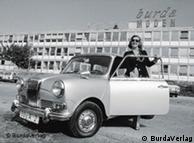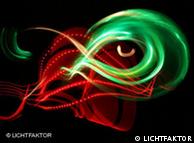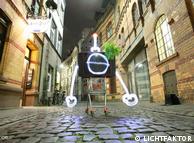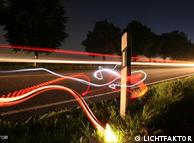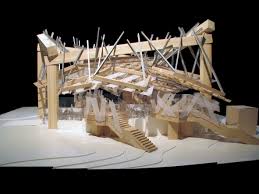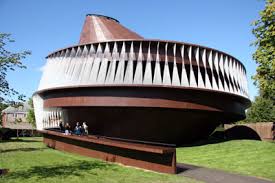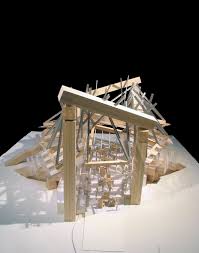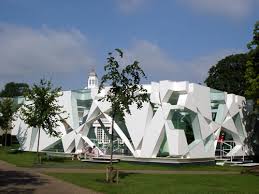Merce Cunningham, Dance Visionary, Dies Published: July 27, 2009
Merce Cunningham, the revolutionary American choreographer, died Sunday night at his home in Manhattan. He was 90.
Skip to next paragraph 
Richard Rutledge
Merce Cunningham in "Antic Meet," with design by Robert Rauschenberg, in 1958. More Photos »

The latest on the arts, coverage of live events, critical reviews, multimedia extravaganzas and much more. Join the discussion.

Radford Bascome/Cunningham Dance Foundation
Carolyn Brown and Merce Cunningham performing "Suite for Five" in 1958. More Photos >
His death was announced by the Cunningham Dance Foundation.
Over a career of nearly seven decades, Mr. Cunningham went on posing “But” and “What if?” questions, making people rethink the essence of dance and choreography. He went on doing so almost to the last.
Until 1989, when he reached 70, he appeared in every single performance given by the Merce Cunningham Dance Company. In 1999, at 80, though frail and holding onto a barre, he danced a duet with Mikhail Baryshnikov at the New York State Theater in Lincoln Center. In April he observed his 90th birthday with the 90-minute “Nearly Ninety” at the Brooklyn Academy of Music.
Even when it became known that he was fading, and friends began coming to bid farewell to him in recent days, he told one colleague that he was still creating dances in his head.
Mr. Cunningham ranks among the foremost figures of artistic modernism and among the few who have transformed the nature and status of dance theater, visionaries like Isadora Duncan, Serge Diaghilev, Martha Graham and George Balanchine.
In his works, independence was central: dancers were often alone even in duets or ensembles, and music and design would act as environments, sometimes hostile ones. His movement — startling in its mixture of staccato and legato elements, and unusually intense in its use of torso, legs and feet — abounded in non sequiturs.
In his final years, while still known as avant-garde, he was almost routinely hailed as the world’s greatest living choreographer. Mr. Cunningham had also been a nonpareil dancer. The British ballet teacher Richard Glasstone maintains that the three greatest dancers he ever saw were Fred Astaire, Margot Fonteyn and Mr. Cunningham. He was American modern dance’s equivalent of Nijinsky: the long neck, the animal intensity, the amazing leap. In old age, when he could no longer jump, and when his feet were gnarled with arthritis, he remained a rivetingly dramatic performer, capable of many moods.
International fame came to him before national fame. In due course he was acknowledged in America as one of its foremost artists, but for a time his work was known here only in specialist dance, art and music circles. Not so in London, Paris and other cities. There Mr. Cunningham was widely celebrated as the creator of a new classicism, as Diaghilev’s successor, as one of the most remarkable theater artists of his day. And it was in Europe that he was most acclaimed right through to this decade, with sold-out Cunningham seasons in Paris at the Théâtre de la Ville or the Opera.
Yet he was always a creature of New York. Close to the founding members of the New York Schools of Music, Painting and Poetry, Mr. Cunningham himself, along with Jerome Robbins and the younger Paul Taylor, led the way to founding what can retrospectively be called the New York School of Dance.
These choreographers both combined and rejected the rival influences of modern dance and ballet, notably the senior choreographers Graham and Balanchine. They absorbed aspects of ordinary pedestrian movement, the natural world and city life. They tested connections between private subject matter and theatrical expression. And they re-examined the relationship between dance and its sound accompaniment. With Graham and Balanchine, they made New York the world capital of choreography, and the New York School influenced the world in showing how pure dance could be major theater.
Many of the dancers who passed through Mr. Cunningham’s company, notably Mr. Taylor and Karole Armitage, went on to become prestigious choreographers themselves. Many other choreographers, notably Twyla Tharp and Mark Morris, have paid tribute to his influence.
Mr. Cunningham’s most celebrated and revolutionary achievement, shared with the composer John Cage, his collaborator and companion, was to have dance and music created independently of each other. His choreography showed that dance was principally about itself, not music, while often suggesting that it could also be about many other things.
“Ambiguity” and “poetry” were among Mr. Cunningham’s favorite words when talking about choreography. So was “theater.” Wit and humor abounded in his work; his conversation was full of laughter and wry anecdotes. Partly because dance was the main subject of his choreography, and partly because he often created dances requiring virtuoso skill, he did more than any other choreographer to demonstrate that dance can be classical while being in most ways far from ballet.
Mercier Philip Cunningham was born on April 16, 1919, in Centralia, Wash., the third of four children of Clifford Cunningham, a lawyer, and the former Mayme Joach. (One brother died before Mercier’s birth.) His two other brothers, Dorwin and Jack, followed their father into the legal profession.
Like many artists, he grew up feeling different, “from about age 2.” Later, with this in mind, he made a solo for himself called “Changeling” (1957).
But he also took his birthplace with him. Even the names of Cunningham works like “Borst Park” (1972), “Inlets” (1977) and “Inlets 2” (1983), all made in New York, referred to parts of Washington. It was there that his interest in wildlife began. Although he did not enjoy country life, his series of “nature studies” continued for decades, from “Springweather and People” (1955) to “Pond Way” (1998). In “Solo” (1975), which he alone ever danced, he seemed to metamorphose from one animal into another.
He took his first dance classes in Centralia. In 1936, he went to Washington, D.C., to study at George Washington University alongside his elder brother Dorwin. He quit after a few months, but it was there that he first saw choreography that electrified him, in a performance by the Kurt Jooss company.
In 1937 he began study at the Cornish School in Seattle. At first he concentrated on theater but also started his first formal study of modern dance with Bonnie Bird, a young woman who had trained and danced with Graham and who went on to become an internationally renowned teacher. A clash with the drama teacher Alexander Koriansky (who disliked modern dance) led to Mr. Cunningham’s switching his first area of study from theater to dance.
In his mind, however, he never left theater. Under Koriansky he had begun to play in Shakespeare and Chekhov and to practice Stanislavskian methods. In later years he was excited by many radical figures in drama, not least Antonin Artaud, and in the 1960s, as he and his company began to tour internationally, theater figures like Lindsay Anderson and Peter Brook hailed his work as drama.
At the Cornish School Bird’s classes introduced him to modern dance as a rigorous discipline. He also started to choreograph. And he became close to Joyce Wike, an anthropology student who had privileged access to the Swinomish Indian tribe; he once watched an extraordinary dance ceremony from which nontribesmen were barred. (One of his first major solos for himself, from 1942, was called “Totem Ancestor.” ) His interest in anthropology became a permanent source of inspiration, most obviously in “RainForest” (1968), where he took ideas from Colin M. Turnbull’s account of life among African pygmies.
In 1938 Bird hired the young composer John Cage as her chief accompanist and music director. Bird and Cage introduced Mr. Cunningham and other dance students to the photography of Edward Weston (whose son was a Cornish student) and to the paintings of Paul Klee and Mark Tobey. Tobey’s work, like Klee’s, anticipated many of the 1940s breakthroughs of Abstract Expressionism, particularly in its decentralized use of space; Cage and Mr. Cunningham became devotees.
In 1939 Bird took her students to the first West Coast session of the Bennington College modern dance summer School at Mills College. Mr. Cunningham was 20. His extraordinary dance talent — his jump was phenomenal and remained so for many years — was immediately recognized. He accepted an offer from Graham, and that September moved to New York. Stepping onto a New York sidewalk for the first time, he looked at the skyline and, as he often recalled, said, “This is home.”
That December he danced on Broadway in a Graham season at the St. James Theater. His long neck and sloping shoulders reminded people of a Picasso acrobat.
Graham, unsure that her teaching methods were sufficient for him, sent him to study at the School of American Ballet. When Lincoln Kirstein, co-founder of New York City Ballet, asked him why a modern dancer should study ballet — the two genres existed in virtual warfare at the time — Mr. Cunningham replied, “I really like all kinds of dancing.” Though he was not the first modern dancer to study ballet, his way of splicing elements from both genres in his own work was a breakthrough. He was soon invited to teach modern dance at the school.
The second man to dance in Graham’s previously all-female company, Mr. Cunningham remained a member of it until 1945, appearing in the premieres of masterworks like “El Penitente” (1940), “Letter to the World” (1941) and “Appalachian Spring” (1944).
Spending time alone in a studio, he began to explore his own ideas about dance. In 1942 Mr. Cage and his wife, Xenia, an artist, arrived in New York; Mr. Cunningham and Xenia appeared in a 1943 Cage percussion orchestra performance at the Museum of Modern Art, as a photo spread in Life magazine records. Cage urged him to choreograph, and the two began to develop what would emerge in the early 1950s as the most radical of their ideas about dance theater: that dance and music should be performed at the same time but prepared separately, both autonomous and coexistent.
Cage and Mr. Cunningham also became lovers, and the ensuing breakup of the Cages’ marriage was painful. For many years only a few people realized that the Cage-Cunningham relationship was sexual. Although their offstage partnership became an open secret, the subject was not open until 1989, when Cage, answering an unexpected public question about it, surprised everyone by replying, “I do the cooking, and Merce does the dishes.”
Mr. Cunningham began to present his own choreography in 1942. In 1944, with music by Cage, he presented a performance of dance solos that he later regarded as the true beginning of his career as a choreographer.
But his own dancing came first; he was the main dancer of his choreography for decades. His animal-like qualities of grace and intensity were as remarkable as his jump. His dance vocabulary owed much to both Graham modern dance (especially its use of the back) and to ballet (especially its use of the legs and feet).
For many people Mr. Cunningham was also a superlative dance teacher, right up to this year. Although he often spoke of teaching as if it were a necessary evil, he was passionate about it. No other choreographer has asked dancers to move the torso with such rigor and intensity while also keeping the lower body busy. No modern-dance choreographer has ever made more brilliant use of legs and feet.
In 1947 Kirstein commissioned him to make a dance for Ballet Society (the 1946-48 precursor to New York City Ballet). When Mr. Cunningham asked what kind of piece he wanted, Kirstein, thinking he was being open-minded, said, “Well, I think it should have a beginning, a middle and an end.” Mr. Cunningham, however, steeped in Joyce’s “Finnegans Wake,” thought of how nature doesn’t have finite forms with beginnings and ends. Instead, his mind turning to Joycean and cyclical form, he choreographed “The Seasons” (1947).
Like Cage and other composers, as well as several painters, Mr. Cunningham also began experimenting with chance as a compositional tool. He used the I Ching in particular, but also cards and dice to determine which parts of the body would be used, which directions, how many dancers. The point had nothing to do with improvisation; Cunningham choreography was very precisely made. Rather, he wanted to banish predictable compositional habits.
The I Ching is the “Book of Changes,” and Mr. Cunningham’s choreography became an expression of the nature of change itself. He presented successive images without narrative sequence or psychological causation, and the audience was allowed to watch dance as one might watch successive events in a landscape or on a street corner.
“Psychology doesn’t interest him; zoology and anthropology do,” Mr. Cunningham’s leading co-dancer, Carolyn Brown, once wrote. When another dancer asked what “Minutiae” (1954) was about, Mr. Cunningham took her to the window of the New York studio, showed her the street below and said, “That.”
Zen Buddhism was another influence. Although Mr. Cunningham’s choreography often featured qualities of attack and conflict, it also expressed a Zen kind of acceptance. Mr. Cunningham, always a superlative dance soloist, now created a dance theater in which the basic condition was soloism. Even in a duet or a trio, each dancer retained marked degrees of independence and detachment.
The Merce Cunningham Dance Company gave its first performances in 1953, at the Black Mountain College in North Carolina. And it was there that Mr. Cunningham and Cage met the young painter Robert Rauschenberg, who embraced their ideas.
With Rauschenberg, the company became a three-way demonstration of the autonomy of the theater arts. The dancers often did not know what their costumes, décor or music would be until the dress rehearsal or first night. Mr. Cunningham, Cage and Rauschenberg all found this liberating, and the work cemented them as colleagues. In tours across America, Cage would drive the company van while Rauschenberg took charge of the lighting.
From the mid-1940s, Mr. Cunningham began using other composers as well, including David Tudor, Christian Wolff, Earle Brown, Morton Feldman and Takehisa Kosugi. Brian Eno, Gavin Bryars and Sonic Youth have been among more recent musical colleagues.
Mr. Cunningham was himself a remarkable dance partner. One female dancer said the strength and focus he applied made a duet with him the equivalent of a profound sexual experience. Male-female duets always stimulated his creative imagination: he showed how people can be intensely involved and isolated at the same time in a relationship, both cooperating and independent.
Modern dance had been notable for its earnestness; Mr. Cunningham’s work was often characterized by humor. “Antic Meet” (1958), for example, seemed to satirize the more foolish mannerisms of the Graham dance theater. Much of Mr. Cunningham’s wit arose out of his concentration on pure form. An unpredictable change of rhythm or direction, a brisk figure of nifty footwork could provoke the same smiles and laughter as the jokes in a Haydn symphony.
Mr. Cunningham finally achieved international fame with a world tour in 1964. As soon as the curtain rose on opening night in London, at Sadler’s Wells Theater, the company members felt that they were receiving a quality of attention they had never received before. The tour included several other European cities and crossed Asia.
Once, discovering that the company was booked to perform in a space without a proscenium arch, Mr. Cunningham decided to arrange a one-off anthology of separate sections of choreography, using costumes and music different from those of their original contexts. This became a new and important Cunningham genre, the Event. Events provoked questions about how choreography could look when decontextualized and recontextualized. How would a solo from a 2002 work look between a duet from a 1982 work and a 1997 quartet, all before a 1953 Rauschenberg décor and in newly designed costumes?
Events also stimulated Mr. Cunningham’s love of unconventional spaces for performance; over the years they included the Piazza San Marco in Venice, Grand Central Terminal in New York and a beach in Perth, Australia.
At the end of the 1964 tour, Rauschenberg and some dancers left the company. In the years afterward the group’s designers included Jasper Johns, Frank Stella and Andy Warhol.
Mr. Cunningham continued to experiment. In the 1970s he became fascinated by filming dance. But one of the most controversial elements in Cunningham dance theater in recent decades was Mr. Cunningham himself, now aging visibly. Often he gave himself roles in which his seniority was an element in the drama.
In 1989 he began to explore composing dances on a computer; his first dance made this way was “Trackers” (1991). This became, until late in his life, his main method of dance making. He also increasingly resorted to using a wheelchair and stayed at home while his company toured. He is survived by his younger brother, Jack, of Centralia.
John Cage died in 1992. Although he had advocated the autonomy of the arts, he was often a controlling figure. Mr. Cunningham once said of life without Cage: “On the one hand, I come home at the end of the day, and John’s not there. On the other hand, I come home and John’s not there.”
Mr. Cunningham’s dance invention remained fecund after Cage’s death. “Biped” (1999), with computer-generated visual imagery suggesting many aspects of transcendence, proved the single most sensational dance choreographed by anyone in the 1990s.
Mr. Cunningham remained a man of secrets. Few people knew he had taught himself Russian or had written his own translation of “The Bear” by Chekhov. When he invited Baryshnikov to dance a duet with him in his New York 80th-birthday season (“Occasion Piece,” 1999), he surprised Mr. Baryshnikov by writing to him in perfect Cyrillic script. He took up drawing, frequently combining features of two or more different species to create a convincing but fictional animal.
Mr. Cunningham often spoke and wrote movingly about the nature of dance and would laugh about its maddening impermanence. “You have to love dancing to stick to it,” he once wrote. “It gives you nothing back, no manuscripts to store away, no paintings to show on walls and maybe hang in museums, no poems to be printed and sold, nothing but that single fleeting moment when you feel alive.”
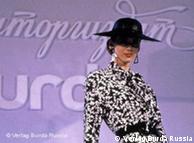 Bildunterschrift: Großansicht des Bildes mit der Bildunterschrift: Burda-Moden: worldwide success
Bildunterschrift: Großansicht des Bildes mit der Bildunterschrift: Burda-Moden: worldwide success